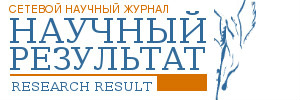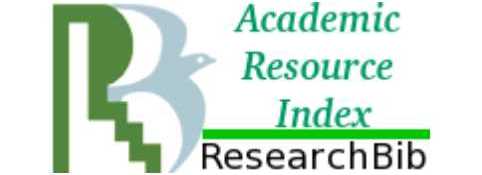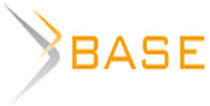The effect of the National Plan (2010-2020) on the development of preschool education in China: Evidence from before-after design at a 7-year interval and policy analysis
Aннотация
This paper examines the effect of the National Plan 2010-2020 policy that focuses on the development of the pre-school education system in China. The examination critically follows a before-after design. The data included six indicators of preschool education presenting the numbers of preschool education schools, total enrolment, new enrolment, graduates, educational personnel and full-time teachers. The census bureau data was retrieved from the National Bureau of Statistics of China for the years 2003-2009 and 2010-2016. The results indicated a statistically significant difference between the pre-and-post intervention intervals, implying that the National Plan implementation achieved a quantitative development of preschool education in China. This suggested three patterns of preschool education in China: semantic universalisation, numerical universalisation and agentic universalisation which can be extended to concrete and abstract forms. The presented outcomes support the realisation of the concrete form based on the quantity but not the abstract form which is based on quality. Further, the National Plan has been realised quantitatively but not qualitatively: the analysis of the census bureau data and the policy document supported this outcome in the sense that the policy document itself lacks a detailed description (focus) of the quality development.
Ключевые слова: before-after design, census bureau data, China, national plan 2010–2020, preschool education
К сожалению, текст статьи доступен только на Английском
Introduction. The role of preschool education as a foundation of basic education has been clearly emphasised in the 'National Plan for Medium and Long-term Education Reform and Development' (2010-2020) (hereafter the National Plan) (Ministry of Education, People's Republic of China 2010). Since its enactment in July, 2010, there has been progress in the implementation of the National Plan (Gu, 2010), which was basically structured with the aim to “guide and allocate tasks for the development of the education of the next decade” and “to promote the scientific development of education and proposed the development goal of changing China from the world’s largest education system to one of the world’s best” (Hui, 2013: 39). However, for some researchers, this policy is simply another version of prior issued policies that did not achieve significant progress on the education system in China (Pan, 2015). Resultantly, the primary author initially started to critically review and analyse the significance of preschool education reported in the National Plan document. This was achieved through the use of the Automatic Recognition of Multi-Word Terms (http://www.nactem.ac.uk/software/termine/) that is mainly employed for finding out the C–Value (Frantzi, Ananiadou and Mima, 2000) of preschool education and/or any concepts relevant to this specific educational stage. The use of the C-Value software led to recording three conceptions that contained: preschool education (rank = 8 and c–value = 14), enhancing preschool education (rank = 73 and c–value = 3.17) and preschool teacher (rank = 421 and c–value = 1). The primary author also critically reviewed the National Plan which includes one chapter (III) for preschool education. The chapter states three acts (5–7): 1) universalizing preschool education, 2) defining government responsibilities, and 3) strengthening preschool education in rural areas (Ministry of Education, People's Republic of China, 2010: 2).
Among several strategic goals, the National Plan focuses on universalising the preschool education. Four indicators were set in this policy to be realised by 2020: 1) number of children in preschool education, 2) gross attendance rate for pre-schoolers of 1 year before school, 3) gross attendance rate for pre-schoolers of 2 year before school, and 4) gross attendance rate for pre-schoolers of 3 year before school. The proposed number of pre-schoolers in 2009, 2015 and 2020 in millions are 26.58, 34.0 and 40.0 respectively (Ministry of Education, People's Republic of China 2010). In this regard, Tag (2012) proposed three forms of universalisation of preschool education: semantic universalisation, numerical universalisation and agentic universalisation. While the semantic universalisation refers to the given importance to preschool education at the country level; the numerical universalisation shows indicators of the development of preschool education. These indicators could be national or international. However, they must guide this development so that it can be measurable and lead to valid outcomes. Agentic universalisation occurs when a certain country fails and/or needs consultation to achieve the first two forms and then an agency (i.e. UNICEF, UNESCO, etc.) is assigned to intervene (Tag 2012). The report by the China Education Center (2018) claimed that “pre-school education has been generally universalized in big and middle-sized cities” (para 2). The other strategic goals also included: 1) the presence of a balanced and equal access to education in both rural and urban areas; 2) promoting bilingual preschool education; 3) augmenting preschool education for disabled pre-schoolers ; 4) issuing of financial aid policy to fund preschool education in rural areas and low income urban families; 5) improving legislations of preschool education; and 6) raising the importance of preschool education in rural areas (Ministry of Education, People's Republic of China 2010).
Literature review
Early childhood education (ECE) is referred to preschool education from birth till the age of 6. The following figure 1 shows the structure of preschool education in China.

The development of preschool education is two folded with consideration of both quantity and quality. The numbers of preschool education should increase and this has been planned through the 3-year preschool education. Quality is also considered through improvement and/or modification of preschool education management and regulations (e.g. The Management of Kindergartens and the Regulations on Kindergarten Work). Preschool education has been set among the priority areas even within the National Plan (The Organisation for Economic Co-operation and Development [OECD] 2016). Although the Chinese government attaches high importance to preschool education as part of the early childhood development (ECD), the government pays higher attention to the age of 3-6 that should be doubled by 2020 as compared to the age of 0-3 that should be under consideration (The United Nations International Children's Emergency Fund [UNICEF] 2018). The review of Zhu (2009) concerning the preschool education in the last three decades focused on one child policy, teacher education, education reform and curriculum development. It highlighted the need for a further development of preschool education, and attributed the occurrence of problems and less success in preschool education to the lack of resources. This last point was confirmed by Cao and Li (2017) who emphasised the importance of finance to improve preschool education system especially when being compared to those systems in developed countries.
Moreover, there are internal and external challenges facing preschool education in China, leading to changing of family structures and increasing influence by external thoughts and values. This leads to proposing that investment on preschool education “…effectively provide[s] an early childhood education system that fosters obedient, hardworking children” (Vaughan, 1993: 35). Reconsideration of the expenditures on preschool education system becomes obligatory. For instance, allocating certain funds to raise teachers’ salaries (Hu, et al., 2017) is essential. This said, the preschool education market in China has been described as ‘slightly lagging compared to other countries’ but ‘the industry is now expanding dramatically with larger enterprises and capital flowing into the market, leading to intensified competition’ (Jiang, 2016).
Much research reported the manifesting problems on preschool education development in China. Among these is the gap between different areas of China in terms of preschool education provision and quality (Hong, Luo and Cui, 2013). In detail, three main areas represent the major problems of urban and rural preschool education system: opportunities (less for rural areas), process (less quality for rural areas) and results (lower outcome for rural areas (Hong, Liu, Ma, and Luo, 2015). Further, evidence of the zero and/or minor effect of preschool education on child development is reported (Gong, Xu and Han, 2016). Similarly, Li, Yang, and Chen (2016) state that preschool education system in China still manifests major problems to reach a higher level even the launch of the National Plan. They underscore that accessibility (i.e. not everyone can enrol), affordability (i.e. very high cost especially for non-governmental preschools), accountability (low quality in some preschools), social justice (gap between rural and urban areas) and sustainability are the major barriers toward the improvement of the preschool education system. Additionally, preschools with a large number of rural migrant children demand of the government to create a better learning environment to facilitate the development of both urban children and rural migrant children’ which can be achieved “…by strengthening teachers’ quality, increasing education investments, and supplying appropriate teaching and education facilities” (Li, et al. 2015: 133).
In addition to the lack of clear policies integrating and/or defining preschool education teachers in the development of preschool education curriculum (Chen, 2016), developing a quality rating system is also another major problem being hindered by social and economic restrictions (Hu and Li, 2012). Besides, inclusion of pre-schoolers with special needs in regular education system is one of the areas demanding further improvement (Hu and Szente, 2010). Further, inclusion of children with special needs is hindered by both social and policy related limitations; the society does not value the education for the pre-schoolers with special needs within the regular education system and even if it happened, the used curriculum does not provide suitable material for such population (Hu, 2009). On the contrary, Li (2007) reported upon moderate attitudes about welcoming the idea of the inclusion of pre-schoolers with disabilities in the regular education system in northern China. Preschool education system also lacks good, outdoor-play, quality environment for pre-schoolers (Hu, Kong and Roberts, 2014) merged with a recorded school readiness disparity between rural and urban areas in favour of the latter (Gan, Meng and Xie, 2016).
Other challenges of preschool education system include preschool social competence and its possible relationships to mother and teacher attachments which are among the areas that need to be examined and developed towards establishing a successful preschool education system (Wu, 1992). In this regard, it is reported that “pre-schoolers ' social skills at the first semester of third preschool year predicted teacher-child relationships quality at the exit point of preschool. However, within the same time period, it provided little evidence that teacher-child relationships could influence pre-schoolers ' social skills” (Wu, et al.
2018: 589).
The Preschool Education Guidelines, issued in 2001 (Che, 2010), ascertaining the moving of preschool education from a national programme into a programme similar and/or identical to those in the western developed countries, seems to repeat itself in the National Plan. This point was minimally found through a qualitative study exploring preschool teachers who confirmed the move of the Chinese preschool education system from teacher-directed system to that of a student-directed one — following the western model (Fees, Hoover and Zheng, 2014). The governments of each province have established certain plans and programmes for the implementation of the National Plan. While there is progress going on, much development is still needed to reach a high level (Zhou, 2011). Even when comparing the perceptions of the Chinese preschool education teachers with other countries, they seem to be impacted by the education policy and current educational system. Wang (2000) mentioned that the Chinese preschool education teachers reflect different but specific perceptions and beliefs (e.g. class size, school location) — compared to the American preschool education teachers (i.e. general education system). Even though the National Plan attempted to change the teaching methods, the teachers are further willing to apply the traditional teaching approach that is valued in their culture (Yang, et al. 2018: 135).
The present study. Research reporting the effect and/or the implementation of the National Plan on the development of preschool education in China is scarce. For instance, Li, Yang and Chen (2016) examined preschool education between 2006 and 2012 and analysed some preschool education laws. The study however did not compare after the pre-and-post policy implementation. Further, researchers descriptively analysed the realisation of the National Plan in regard to preschool education, referring to preschool education in the National Plan (Tsegay, Kansale and Goll, 2017). The drawn conclusions were solely based on relatively subjective analysis and a review of previous research. The application of a systematic review could lead to further reliable evidence about the strengths and weaknesses of the National Plan reported in their study. One more study based on semi-structured interviews and a survey for parents and teachers explored the provision of universal preschool education as per stated in the National Plan. The preschool readiness theme was the guiding point for this paper that included three construct concepts: ready child, ready family and ready preschool. Although this study explored the National Plan from the perspective of teachers and parents, it ended without any evidence for the realisation for the National Plan for the time being (Xie and Li, 2018). Furthermore, a study with data collected for over 2000 pre-schoolers challenged the National Plan effectt — assuming that the output of the National Plan is rather quantitative than quality-related one. The study stated the still of the gap between rural and urban areas due to the lack of unified standards for preschool education system in China (Li, et al. 2018). Thus, our study examines the possible effect of the National Plan on preschool education development before and after the implementation of this policy at a 7–year interval through the census bureau data retrieved from the NBSC database. The following hypotheses guide this study:
H0: There will be no statistically significant difference between the total number of preschool education schools, total enrolment, new enrolment, graduates, educational personnel and full–time teachers before and after the National Plan at a 7–year interval; and
HA: There will be statistically significant difference between the total number of preschool education schools, total enrolment, new enrolment, graduates, educational personnel and full–time teachers before and after the National Plan at a 7–year interval.
Method. In this study, although the pre-schoolers are the population, the data available in NBSC database concerning the 7-year interval constitutes the main data related to the pre-post national plan implementation. In other words, the period between 2004 and 2010 forms the pre-intervention. Further, the years between 2011 and 2017 constitute the post-intervention period. However, for clarity, it is important to note that the data of every year demonstrates/represents the data of a previous year. For example, in the database, the 2011 data is actually the 2012 data. The same is the case with the data of all other years included in this study.
Above all, the analysed data is disseminated in the website in the form of chapters. These chapters relate specific educational field. Giving this example clarifies the issue: There is one section concerning the preschool education. In this section, the data mentions the quantity of the preschool education schools, total enrolment, new enrolment, graduates, educational personnel and full–time teachers. As a result, the authors highlight that the results of this study work simply as indicators of the preschool development education level, along with the effect of the National Plan on the development. It is safe to note that these results are not generalizable to cover the overall quality of the preschool education. This is simply because the hypotheses of our study are totally quantative. Further, there was no direct contact with those in the field of preschool education.
Measures
In this study, the analysis of census bureau data is the main method adopted for the examination of the study hypotheses on the development of preschool education in the Republic of China during the pre-post implementation processes of the national plan (2010-2020). This means that the measures used in the study are simply unobtrusive. The data collected simply show the quantities of preschool education schools, total enrolment, new enrolment, graduates, educational personnel and full-time teachers. The implementation processes of the National Plan started to take place from the year of 2010. Regarding the data, it actually contains a pre-7–year interval as well as a post-7–year interval. The policy document of the National Plan is the intervention itself, and is considered to be an independent variable, containing data of either the pre–intervention or the post–intervention periods. Concerning the dependent variables, they are the six variables of preschool education which are recently mentioned.
Design
This study employed a quasi–experimental design, namely before and after design. In the notational form, it can be depicted as:
O X O
where:
X= the National Plan
O= the preschool education variables before and after the intervention at a 7–year
interval
In this design, it is assumed that the National Plan has an effect on the preschool education development in China. Therefore, the quantitative indicators related to the number of schools of preschool education, total or new enrolment, graduates, educational personnel, and full–time teachers would be statistically, significantly higher in the post–intervention period.
Procedure
The primary author retrieved the data on 10th October, 2018 from the database of NBSC (http://www.stats.gov.cn/english/Statisticaldata/AnnualData/). This includes the census bureau data of 1999 and 2017 for all sectors in China. The tables represent the data collected from the census, and reflect the total number of preschool education schools, total and new enrolments, graduates, educational personnel as well as full–time teachers. The primary author started by converting the data into excel file and used the SPSS version 20 for the analysis processes. Besides the time series and descriptive statistics, the primary author employed the independent samples t-test for testing the hypotheses concerning the possible effect of the National Plan on the preschool education development before and after the implementation at a 7–year interval.
Results. Fig. 2A–F shows the variances for preschool education schools, total enrolment, new enrolment, graduates, educational personnel and full-time teachers before and after the implementation of the national plan 2010–2020 at a 7–year interval. As is shown, the spread of the numbers is greater for post intervention periods. This indicates that the variances among the two groups in each boxplot are quite different. Thus, it is possible to further the examination of these variables through the independent samples t-test to examine the statistical significance.



Fig. 3A–F displays the times series for preschool education schools, total enrolment, new enrolment, graduates, educational personnel and full-time teachers before and after the implementation of the national plan 2010–2020 at a 7–year interval. As is seen, the two patterns show the seasonality of the preschool education services change before and after the intervention. The green lines refer to a stable rising line pattern except for the new enrolment which declined during the last period—as compared to the blue lines showing minor rising with fluctuations during pre-intervention periods. These two patterns indicate a difference and change during the before-and-after intervention periods.


Table 1 A–B presents the results of the independent-samples t-test comparing the number of the special education schools, total enrolment, new enrolment, graduates, educational personnel and full–time teachers before and after the implementation of the National Plan 2010–2020 at a 7–year interval, respectively.
The first variable was the preschool education schools. The results show a significant difference in the schools’ number for the pre–intervention (M=127171.86, SD=8055.397) and post–intervention (M=195764.29, SD=31715.619) periods; t (12) = -5.546, p < .001. These results suggest that the National Plan has an effect on the preschool education development. Specifically, they suggest that the preschool education institutions have increased since the implementation of this new policy.
The second dependent variable was the total enrolment its analysis indicates a significant difference in the total enrolment for the pre–intervention (M=22882548.86, SD=2265792.329) and post–intervention (M=38158533.86, SD=4991530.122) periods; t (12) = -7.373, p < .001. These results indicate the positive effect of the National Plan on the total enrolment of students in preschool education. Similar to the previous variable, the results report upon the significant increase of the enrolment level since the implementation of the national plan.
Application 1,2.
The third dependent variable was the new enrolment and there was a significant difference in the new enrolment for the pre–intervention (M=14111096.57, SD=817095.005) and post–intervention (M=19040494.43, SD=1080900.565) periods;
t (12) = -9.625, p < .001. These results predict that the National Plan has an effect on the new enrolment level. Such results indicate that since the execution of the new policy, the number of the new enrolled students in preschool education has been significantly increasing.
The fourth dependent variable was the graduates. The analysis shows a significant difference in the graduates for the pre–intervention (M=10434034.43, SD=103541.225) and post–intervention (M=14154522.14, SD=2135685.717) periods; t (12) = -4.604, p < .001. These results assume that the National Plan has an effect on the number of graduates of preschool education. Precisely, they suggest that since the implementation of the National Plan, the number of graduates has significantly increased.
The fifth dependent variable was the educational personnel. The analysis refers to a significant difference in the educational personnel for the pre–intervention (M=1247592.86, SD=211672.848) and post–intervention (M=2832320.00, SD=705378.140) periods; t (12) = -5.693, p < .001. These results put forward that the National Plan has an effect on the number of the educational personnel of preschool education. Explicitly, the results suggest that the implementation of the new policy has resulted into a higher demand of educational personnel in preschool education.
The last dependent variable was the full–time teachers and there was a significant difference in the full–time teachers for the pre–intervention (M=782627.00, SD=132444.806) and post–intervention (M=1675688.43, SD=393625.221) periods; t (12) = -5.689,
p < .001. These results imply that the National Plan has an effect on full–time teachers of preschool education. Obviously, such results suggest that the National Plan increased the demand for full–time teachers of preschool education.
Discussion. The study results were in agreement with the initial hypotheses. We proposed that the National Plan has an effect on the preschool education quantitatively. The statistical analyses indicated that since this new policy has started, the numbers of preschool education schools, enrolment level, new enrolled students, number of graduates — have been significantly increasing and a higher demand of educational personnel including full-time teachers has emerged. Therefore, there is a need to accept the alternative hypothesis that there will be a statistically significant difference between the total number of preschool education schools, total and new enrolments, graduates, educational personnel and full–time teachers before and after the National Plan at a 7-year interval. Given this, there are three possible explanations for this outcome.
First, assuming yet following a linguistic perspective that the National Plan document includes both abstract and concrete conceptualisation of preschool education reform, leads to proposing two forms of preschool education development. Quantitative development and this can be measured through indicators like the ones used in our study. Qualitative development and this refers to the quality of the provided preschool education services including: learning environment, teachers, curriculum, etc. The review in the introduction included an evidence of this outcome as well. For instance, the National Plan proposed that the number of pre-schoolers for three periods: 2009, 2015 and 2020 in millions as 26.58, 34.0 and 40.0. The collected data in this study indicated that these goals have been realised for the time being (2009= 26,578,141) (2015= 42,648,284) and (2016= 44,138,630). Although the proposed number for 2020 was 40 million pre-schoolers, this has been already realised by 2016 to reach over 44 million pre-schoolers. On the other hand, the National Plan proposed universalising preschool education, defining government responsibilities and strengthening preschool education rural areas. However, there are no well-defined specifications, standards, and regulations for these abstract conceptualisations and this is where possible shortcomings of the National Plan can start leading to one-sided development of preschool education.
Second, attempting an interpretation of the proposed reforms, mainly the universalisation goal, this could lead to a deeper understanding of such outcome. Tag (2012) proposed three forms of universalisation as mentioned earlier. Assuming that the semantic universalisation has been achieved based on the authors' knowledge about the Chinese context and parents’ efforts to enrol their child/children in preschool education, could lead to the other assumption which is the realisation of the numerical universalisation. The National Plan which puts together the national goals and international goals set by the UNESCO and UNICEF are merged together and this serves towards the realisation of the numerical universalisation. Similarly, the Chinese government has close ties and cooperation with the UNESCO — providing consultation to level up the preschool education in the country — leading to the realisation of the agentic universalisation of preschool education. Despite this, this realisation remains vague when approached qualitatively. For instance, there is a need to find critical answers to these questions: Are these numbers really balanced among all regions of China? Are they balanced between rural and urban China? Are they considering education quality differences between rural and urban regions? Are they considering the differences between government and non-government provided services? All these questions remain unanswerable within the provided quantitative evidence.
Third, having as many pre-schoolers as possible enrolled in preschool education is logically better than having them without preschool education regardless of the variable quality of this universal provision. At all rates, universalising preschool education in China is costly due to the large number of population, and the educational differences between rural and urban regions of China. The gap between the two areas seems everlasting. Moreover, the high demand of preschool education has led to the market expansion especially in the non-government preschool services. While the universalisation is being achieved, the gap between the outcome of this universalisation based on the quality of the variable received services and variable costs are also increasing. Hence, the quality cannot be improved without the first step of improving the quantity (Muthanna and Miao, 2015). In other words, the study outcomes support the quantitative development of preschool education and even the National Plan itself seems to be more directed towards quantity development first and then quality development next. Needless to say, a further detailed policy approaching quality reform is needed.
To sum up the status of preschool education in China, it manifests a huge gap between quality and quantity, equal accessibility for urban and rural areas and even within the most developed areas in China. The preschool education policy reviewed on this study based on the National Plan has undoubtedly succeeded to make preschool education an appealing area of education. Furthermore, the government has succeeded to involve the non-government sector to invest on this area of education. Preschool education is certainly a big if not the biggest market in the world. However, this open market system has led to the negative impact on the quality of preschool education. While being competitive has resulted into the rise and establishment of high quality infrastructure services but it has also increased the gap between rural areas and urban areas. Since receiving better education can ensure better basic education chances, higher education chances and then better employment, so equity is violated, albeit, unintentionally. Considering the three levels of preschool education the researcher approached on the discussion: preschool education has succeeded to be an appealing area (semantic level), to be a large market (numerical level), but is certainly not succeeding in terms providing equal accessibility of this area (agentic level). The use of the concept universalization of preschool education was used to lead this evidence where universalization in terms of quantity has been realized matching the objectives of the National Plan. The quality of universalizing this sector seems to be out of control or manifesting systematic disruption of the quality between government and non-government preschool services or even within the categorisation of the government schools based on the prices of provided educational services. The model below summarises this outcome in terms of context, change and timescale.

Conclusion. The authors conducted this study that examines the effect of the National Plan 2010–2020 on the preschool education development in China. The authors employed the before-after design at a 7-year interval for six indicators, number of preschool education: schools, total and new enrolments, graduates, educational personnel and full-time teachers. The authors used the NBSC database for retrieving data concerning the years 2003–2009 and 2010–2016. The analyses showed statistically significant differences between the pre-intervention and post intervention periods for the six included variables of preschool education. This output and based on the provided three explanations — has at least three possible implications. First, the realisation of the quantitative objective of doubling the number of preschool education has been achieved ahead and this implied high efforts to realise the National Plan, albeit, the quality remains questionable. Second, the three forms of universalisation seem to be realised at the concrete level but not at the abstract level which is the quality of these three forms as compared to the form of preschool education system in China. Third, the quantity development by itself stands as a basic step to have the quality development approached.
Limitations. This research has three limitations. First, the provided evidence is limited to quantitative data, namely, census bureau data at a 7–year interval and the policy document of the National Plan. Follow-up studies supporting and/or being merged with this data, would have strengthened the outcomes. Second, the presented data did not account for and/or integrate some factors and/or variables like rural vs. urban data, female vs. male data, minority ethnicities, developed vs. developing regions which might have also led to a different outcome. Third, the data also was not linked to preschool education curriculum, teachers, learning environment, normal population vs. preschool education population, or one child policy vs. two children policy. These all could have brought about other directions for the outcome of this research.
Future studies. Future research needs to consider previous points mentioned in the limitations section with a further focus on these three points. First, the use of a mixed method research would be practical in providing further plausible outcomes. Second, examining preschool education in relation to other variables like social structure, culture, etc. is also one possibility to measure the effect of the National Plan. Third, while the measured output is roughly an indicator of the realisation of the National Plan, it remains limited to the quantitative side — leaving the qualitative side untouchable and unreachable.

















Список литературы